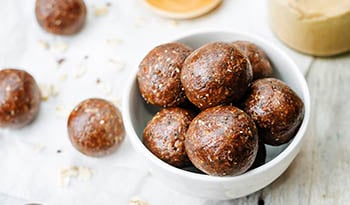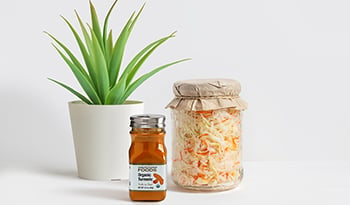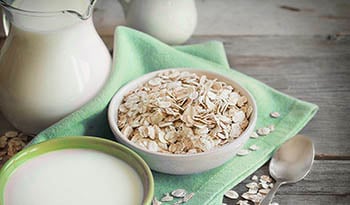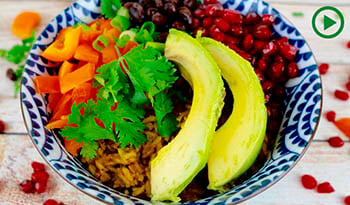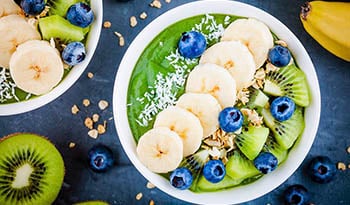6 функционални вида гъби: Ползи, алтернативни рецепти за кафе, повече
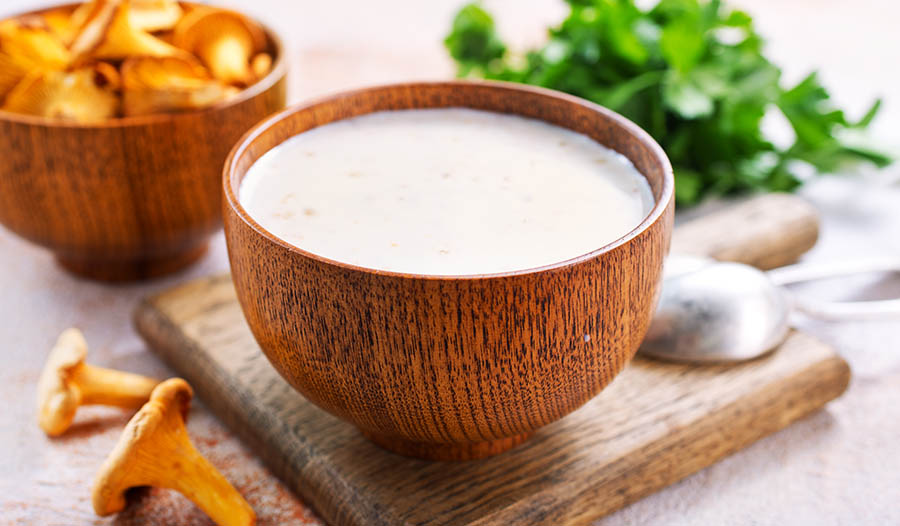
Първоначално публикувано януари 2019 г. / Актуализирано август 2023 г.
В храната и медицината гъбите са издържали теста на времето. Въпреки това в момента популярността им расте, особено на тези сортове, които предлагат "функционални" ползи за здравето.
Световният пазар на функционални гъби, оценяван на над 25 милиарда долара, е в подем. Очаква се до 2030 г. той да нараства с над 10% годишно.
Този ръст е следствие от значителното нарастване на популярността на функционалните гъби както като храна, така и като хранителни добавки, поради многобройните им ползи за здравето.
В продължение на много години най-популярните функционални гъби са били шитаке и рейши. . Макар че тези две гъби станаха още по-популярни напоследък заради имуноукрепващото си действие, растежът на общия пазар на функционални гъби е силно повлиян от появата на други гъби, които укрепват здравето. Следните видове гъби имат имуноукрепващо действие, както и допълнителни ползи за здравето:
- Кордицепс за поддържане на издръжливостта, издръжливостта и енергийните нива.
- лъвска грива за подобряване на настроението, общото състояние на мозъка и паметта.
- Чага и пуешка опашка за подпомагане на имунната система и антиоксидантно действие.
Хранителни ползи от гъбите
Гъбите са богати на биоактивни съединения като бета-глюкани. , флавоноиди като кверцетин. , както и други полифеноли и тритерпени. Ползите за здравето от тези съставки са добре известни. Но още по-вълнуващи са новите данни за уникалната аминокиселина ерготионеин . (ERGO).
Ерготионеинът е аминокиселина, която се произвежда от гъбите и подпомага стареенето и здравето. Д-р Брус Еймс, известен учен от Калифорнийския университет, предлага ERGO да се счита за "витамин на дълголетието" въз основа на обширни изследвания.
ERGO е тиол, което означава, че е съединение, съдържащо сяра. Някои от антиоксидантните и противостареещите му ефекти са подобни на други тиол-съдържащи съединения, като глутатион и коензим Q10. Въпреки това, тъй като ERGO е много по-малка молекула, тя се разпространява в цялото тяло и във всички отделения на клетките, включително в митохондриите (отделението на клетките, което произвежда енергия).
ERGO намалява оксидативния стрес в почти всички изследвани тъкани и клетъчни типове, включително лигавицата на кръвоносните съдове, черния дроб, бъбреците, сърцето и други органи. Той също така помага за намаляване на токсичните ефекти на много вредни химикали.
По-ниският прием на ERGO с храната може да обясни защо американците имат повече здравословни проблеми, свързани с възрастта, и по-ниска продължителност на живота в сравнение с други страни. Например, очакваното ниво на прием на ERGO в Съединените щати е 1,1 mg/ден, докато в Италия то достига до 4,6 mg/ден.
В проучване, проведено сред повече от 15 000 американци, изследователите установяват, че при хората, които консумират дори малки количества гъби, смъртността намалява с 16%. ERGO може да е критичният компонент на гъбата за тази полза.
Гъбите са основният хранителен източник на ЕРГО, като представляват около 95% от общия хранителен прием. И ако човек не яде редовно гъби, вероятно има недостиг на ERGO. Данните сочат, че тя може да ускори стареенето и развитието на свързани с възрастта заболявания.
Видове функционални гъби и техните ползи за здравето
1. Рейши (Ganoderma lucidum)
Интересно е, че в традиционната китайска медицина гъбите рейши са наричани "гъбата на безсмъртието". Откъде древните китайци са знаели, че тя е богата на ERGO?
Гъбите рейши са като фабрика за биологично активни ценни съединения. Най-важното е, че те са богати на бета-глюкани, които подпомагат имунната функция, и на тритерпени, които могат да окажат антиоксидантно и противостареещо действие, да подобрят настроението, да намалят чувството на тревожност и да подобрят съня.
2. Шийтаке (Lentinula edodes)
Въпреки че гъбата шийтаке е основна част от японската диета, тя расте в топлите и влажни райони на Северна и Южна Америка, Азия и Австралия.
Научните изследвания са съсредоточени върху полизахаридите, които укрепват имунната система, въпреки че тези съединения имат и антиоксидантно и противостареещо действие.
3. Чага (Inonotus obliquus)
Гъбите чага растат по много дървесни видове, особено по брезите. Видът на тъмнокафявите гъби Чага върху дърво може да прилича на обгоряла кора.
Подобно на други гъби, чага има имуноукрепващи, антиоксидантни и противостареещи свойства. Чага има и някои ефекти срещу умората.
4. Кордицепс
Кордицепсът обхваща повече от 400 вида гъби, но C. sinensis и C. militaris са видовете, които най-често се изследват и използват в хранителните добавки.
Кордицепсът е богата на хранителни вещества и фитохимикали гъба, която най-често се използва за намаляване на умората и за повишаване на силата. Подобно на много други функционални гъби, те също могат да забавят стареенето.
5. Лъвска грива (Hericium erinaceus)
Гъбите "лъвска грива" са големи бели гъби с много дълги бели бодли, наподобяващи лъвска грива. Обикновено те се отглеждат върху мъртва и гниеща твърда дървесина или могат да се отглеждат върху домашен субстрат.
Подобно на повечето гъби, лъвската грива съдържа полизахариди, които могат да подпомогнат имунната функция. Основната му употреба обаче е в подкрепа на мозъчната функция и настроението. Лъвската грива съдържа съединения, известни като еринацини, които могат да преминат през кръвно-мозъчната бариера и да подобрят функцията на мозъчните клетки, което води до подобряване на настроението, паметта и познавателните способности.
6. Турска опашка (Coriolus versicolor)
Турската опашка е наречена така заради ярките цветове на гъбата и приликата ѝ с пуешка опашка. Те могат да бъдат открити да растат по стволовете на дърветата в гористите местности.
Пуешката опашка се използва най-често заради имуноукрепващите и антиоксидантните си свойства, тъй като може да съдържа съединения, които могат да стимулират и укрепват имунната система.
Кафе с гъби: Здравословна алтернатива, изпълнена с ползи
Смесите за напитки на основата на гъби са един от най-разпространените начини за добавяне на гъби и са отлична билкова алтернатива на традиционните кафе, чай и какао.
Обикновено тези продукти са изсушени прахообразни смеси, които се предлагат под формата на насипен прах или в пакети за еднократна употреба. Обикновено сместа за напитката се комбинира с гореща вода или алтернативни млека на растителна основа и се разбърква, за да се получи кафе, чай или какао, обогатено с гъби. По-долу са представени някои допълнителни идеи.
Рецепта за гъби с тиквена подправка Latte
Тази вкусна рецепта използва тиквена подправка, за да създаде богато и кремообразно лате. Тя съдържа истинско тиквено пюре и е чудесна, когато някой се нуждае от малко допълнителна енергия.
Съставки:
- 3⁄4 чаши гореща вода
- 1 мерителна лъжичка или пакетче Алтернатива за кафе с гъби
- 1 ч.л. канела
- 2 супени лъжици неподсладен кокосов крем
- 2 ч.л. кленов сироп
- 2 супени лъжици. Тиквено пюре
- 1⁄2 ч.л. Тиквена подправка
Инструкции:
- Комбинирайте всички съставки в блендер.
- Пуснете блендера на средна скорост за минута-две, докато сместа се разпени и се смеси добре.
- Поднесете с малко канела за украса.
Рецепта за лате с гъби мака
Тази гъбена напитка съдържа корен от мака, който повишава бдителността, без да предизвиква психически възходи и спадове, както кофеинът. В него има и мед от манука, който осигурява полезни антиоксидантни свойства. Въпреки че има текстура и вкус, подобни на тези на латето, в него всъщност няма кофеин. Затова хората могат да пият версия с рейши на прах преди лягане, за да се отпуснат.
Съставки:
- 1 мерителна лъжичка или пакетче Алтернатива за кафе с гъби
- 1⁄2 ч.л. мака на прах
- 1 чаша ядково мляко
- 1⁄3 ч.л. канела
- 1 ч.л. мед от манука
- 1 ч.л. кокосово масло
Инструкции:
- Смесете всички съставки в тенджера на средно слаб огън.
- Оставете съставките да къкрят в продължение на минута, преди да ги свалите от котлона.
- Поставете съставките в блендера и затегнете плътно капака. Някои блендери трудно пасират топли течности, затова може да е разумно да поставите кърпа върху капака, за да предотвратите разплискване.
- Блендирайте на ниска степен в продължение на една минута до получаване на пяна и гладка текстура.
- Пийте, докато е горещо.
Рецепта за неподатлива на куршуми мока гъби лате
Тази рецепта съчетава гъби и непробиваемо кафе, за да се получи вкусна напитка. Добавянето на кокосово масло придава на кафето приятна кремообразна текстура, без да се използват животински продукти. Затова е изцяло веганска.
Съставки:
- 1 мерителна лъжичка или пакетче Алтернатива за кафе с гъби
- 1 чаша вода или ядково мляко
- 1 с.л. какао на прах
- 1 с.л. кокосово масло
- 1 ч.л. нектар от агаве
Инструкции:
- Загрейте водата или ядковото мляко на котлона или в микровълновата фурна, докато течността се затопли.
- Смесете кафето с гъби и какаото на прах.
- Добавете гъбената смес, кокосовото масло и нектара от агаве към водата и разбъркайте добре, докато се смесят.
Студена гъби Matcha Latte рецепта
Тези, които живеят в топъл климат, ще оценят това охладено лате. Вместо кафе в това ледено лате се използва матча на прах, за да се постигне по-мек енергиен заряд. Комбинацията от няколко вида гъби на прах гарантира, че това лате е пълно със здравословни гъби.
Съставки:
- 2 с.л. топла вода
- 1⁄2 ч.л. матча
- 1⁄2 ч.л. Рейши на прах
- 1⁄2 ч.л. Кордицепс на прах
- 1⁄2 ч.л. Лъвска грива на прах
- 1⁄4 ч.л. екстракт от ванилия
- 1 с.л. кокосово масло
- 1 чаша бадемово мляко
Инструкции:
- Разбийте водата и матча на прах до получаването на фина паста.
- Добавете пастата матча, кокосовото масло, бадемовото мляко, ванилията и гъбите на прах в блендер. Ако гъбите на прах са под формата на капсули, не забравяйте да ги разчупите и да изхвърлите външната обвивка.
- Блендирайте за минута на висока степен, за да стане латето гладко.
- Сервирайте, като излеете върху лед във висока чаша.
Рецепта за златна гъба лате
Това лате получава характерния си цвят от съдържащата се в него куркума. Куркумата и другите подправки в това лате са пълни с полезни антиоксиданти, така че те още повече увеличават защитната сила на гъбите. Фурмите естествено подслаждат латето и засилват вкуса на подправките.
Съставки:
- 3⁄4 чаши гореща вода
- 1 мерителна лъжичка или пакетче Алтернатива за кафе с гъби
- 2 супени лъжици бадемово мляко
- 1 ч.л. кокосово масло
- 1 ч.л. куркума
- 1⁄4 ч.л. черен пипер
- 1⁄4 ч.л. кардамон
- 1⁄4 ч.л. смлян джинджифил
- 2 фурми Medjool
Инструкции:
- Разбъркайте гъбите на прах в горещата вода.
- Отстранете костилките от фурмите.
- Комбинирайте всички съставки в блендер, пулсирайте няколко пъти на висока скорост и след това пасирайте на средна скорост до гладка и пенеста смес.
Класическо гъбено лате
В много гъбени латета се използват предварително смесени прахове, които съдържат гъби и кафе. Тази рецепта е идеална за любителите на кафето, които искат да се насладят на домашно приготвено еспресо и същевременно да получат всички ползи за здравето от гъбите.
Съставки:
- 1 изстрел еспресо
- 1 ч.л. Подсладител по ваш избор
- 1⁄2 чаша мляко или млечна алтернатива
- 1 мерителна лъжичка или пакетче Алтернатива за кафе с гъби
Инструкции:
- Загрейте млякото или алтернативното мляко и подсладителя в тенджера, докато едва заври и подсладителят се разтвори.
- Поставете затопленото мляко и гъбите на прах в блендер и разбъркайте до получаване на пяна.
- Сложете шот еспресо в голяма чаша и внимателно изсипете разпененото мляко в еспресото.
Рецепта за студено кафе с гъби
Съставки:
- 1 мерителна лъжичка или пакетче Алтернатива за кафе с гъби
- 1/2 чаша студена вода
- 1/4 чаша кокосово мляко
- 1 ч.л. мед
- кубчета лед
Инструкции:
- В чаша смесете кафето с гъби, студената вода, кокосовото мляко и суровия мед. Разбъркайте добре.
- Добавете кубчета лед по желание.
- Разбъркайте добре, за да намалите температурата на напитката.
- Насладете се веднага.
Класическа рецепта за горещо гъбено кафе
Съставки:
- 1 мерителна лъжичка или пакетче Алтернатива за кафе с гъби
- 4-8 унции гореща вода
- 1/2 ч.л. суров мед
- Пръскане на сметана
Инструкции:
- Добавете 1 пакет CafeCeps към горещата вода и разбъркайте, за да се разтвори.
- Подсладете с меда.
- Добавете сметаната и разбъркайте, за да се смеси.
- Насладете се на горещата напитка.
Рецепта за гореща гъбена кокосова напитка
Съставки:
- 1 мерителна лъжичка или пакетче от CocoCeps
- 6 унции кокосово мляко
- 2 унции гореща вода
- 1 ч.л. мед
- Щрих от канела
Инструкции:
- Загрейте кокосовото мляко в тенджера на средна температура.
- Бъркайте непрекъснато, докато млякото заври.
- Поставете лъжичката или пакетчето CocoCeps в чаша.
- Добавете горещата вода и разбъркайте, за да се разтвори.
- Добавете меда и щипка канела и разбъркайте.
- Добавете разпененото кокосово мляко и разбъркайте внимателно.
- Насладете се на напитката.
Препратки:
- Grandview Research. Функционални гъби пазар размер, дял & amp; усилвател; Доклад за анализ на тенденциите. ID на доклада: GVR-4-68039-932-0.
- Łysakowska P, Sobota A, Wirkijowska A. Functional Mushrooms: Техните биоактивни компоненти, хранителна стойност и приложение в производството на функционални храни - преглед. Молекули. 2023 Jul 14;28(14):5393.
- Beelman RB, Kalaras MD, Phillips AT, Richie JP Jr. Ограничен ли е ерготионеинът като "витамин на дълголетието" в американската диета? J Nutr Sci. 2020 Nov 11;9:e52.
- Ames BN. Удължаване на здравословното стареене: Витамини и протеини за дълголетие. Proc Natl Acad Sci U S A. 2018 Oct 23;115(43):10836-10844.
- Borodina I, Kenny LC, McCarthy CM, et al. Биология на ерготионеина - антиоксидантен нутрацевтик. Nutr Res Rev. 2020 Dec;33(2):190-217.
- Beelman RB, Phillips AT, Richie JP Jr, Ba DM, Duiker SW, Kalaras MD. Здравни последици от повишаването на съдържанието на ерготионеин в хранителните продукти. FEBS Lett. 2022 May;596(10):1231-1240.
- Ba DM, Gao X, Muscat J, Al-Shaar L, Chinchilli V, Zhang X, Ssentongo P, Beelman RB, Richie JP Jr. Асоциация на консумацията на гъби с общата и специфичната за причините смъртност сред възрастните американци: резултати от проспективно кохортно проучване NHANES III. Nutr J. 2021 Apr 22;20(1):38.
- El Sheikha AF. Хранителен профил и ползи за здравето на Ganoderma lucidum "Лингжи, рейши или манентаке" като функционални храни: и бъдещи перспективи. Храни. 2022 Apr 1;11(7):1030.
- Ahmad R, Riaz M, Khan A, et al. Ganoderma lucidum (Рейши) - ядлива гъба; изчерпателен и критичен преглед на нейните хранителни, козметични, микрохимични, фармакологични, клинични и токсикологични свойства. Phytother Res. 2021 Nov;35(11):6030-6062.
- Roszczyk A, Turło J, Zagożdżon R, Kaleta B. Immunomodulatory Properties of Polysaccharides from Lentinula edodes. Int J Mol Sci. 2022 Aug 11;23(16):8980.
- Szychowski KA, Skóra B, Pomianek T, Gmiński J. Inonotus obliquus - от народната медицина до клиничната употреба. J Tradit Complement Med. 2020 Aug 22;11(4):293-302.
- Krishna KV, Ulhas RS, Malaviya A. Биоактивни съединения от Cordyceps и техния терапевтичен потенциал. Crit Rev Biotechnol. 2023 Jul 30:1-21.
- Chong PS, Fung ML, Wong KH, Lim LW. Терапевтичен потенциал на Hericium Erinaceus за депресивно разстройство. Int J Mol Sci. 2019 Dec 25;21(1):163.
- Saitsu Y, Nishida A, Kikushima K, Shimizu K, Ohnuki K. Подобряване на когнитивните функции чрез перорален прием на Hericium erinaceus. Biomed Res. 2019;40(4):125-131. Doi: 10.2220/biomedres.40.125. PMID: 31413233.
- Jing Y, Zhang S, Li M, Ma Y, Zheng Y, Zhang D, Wu L. Напредък в изследванията върху извличането, структурата и биоактивността на полизахариди от Coriolus versicolor. Храни. 2022 Jul 18;11(14):2126.
ОТКАЗ ОТ ОТГОВОРНОСТ:Този УЕЛНЕС ХЪБ няма за цел да поставя диагнози...














































































 Съдържание
Съдържание



